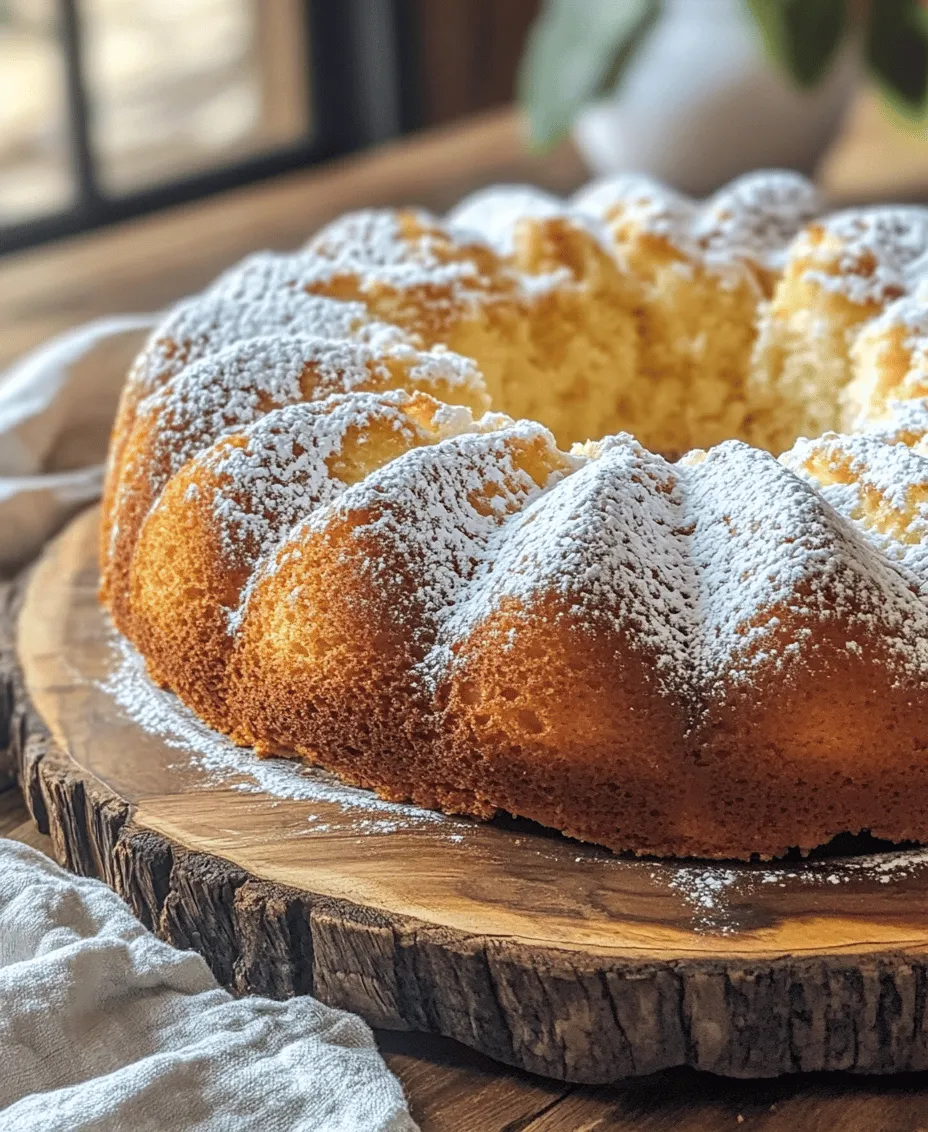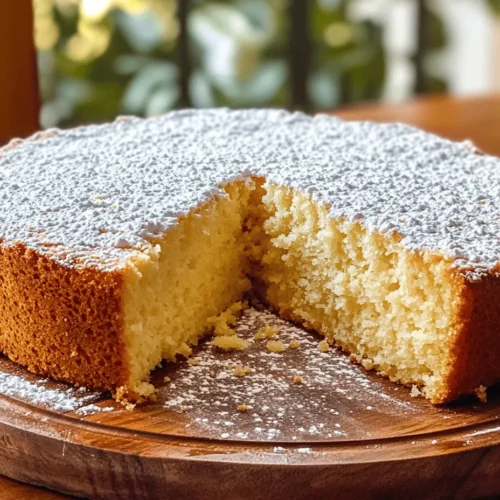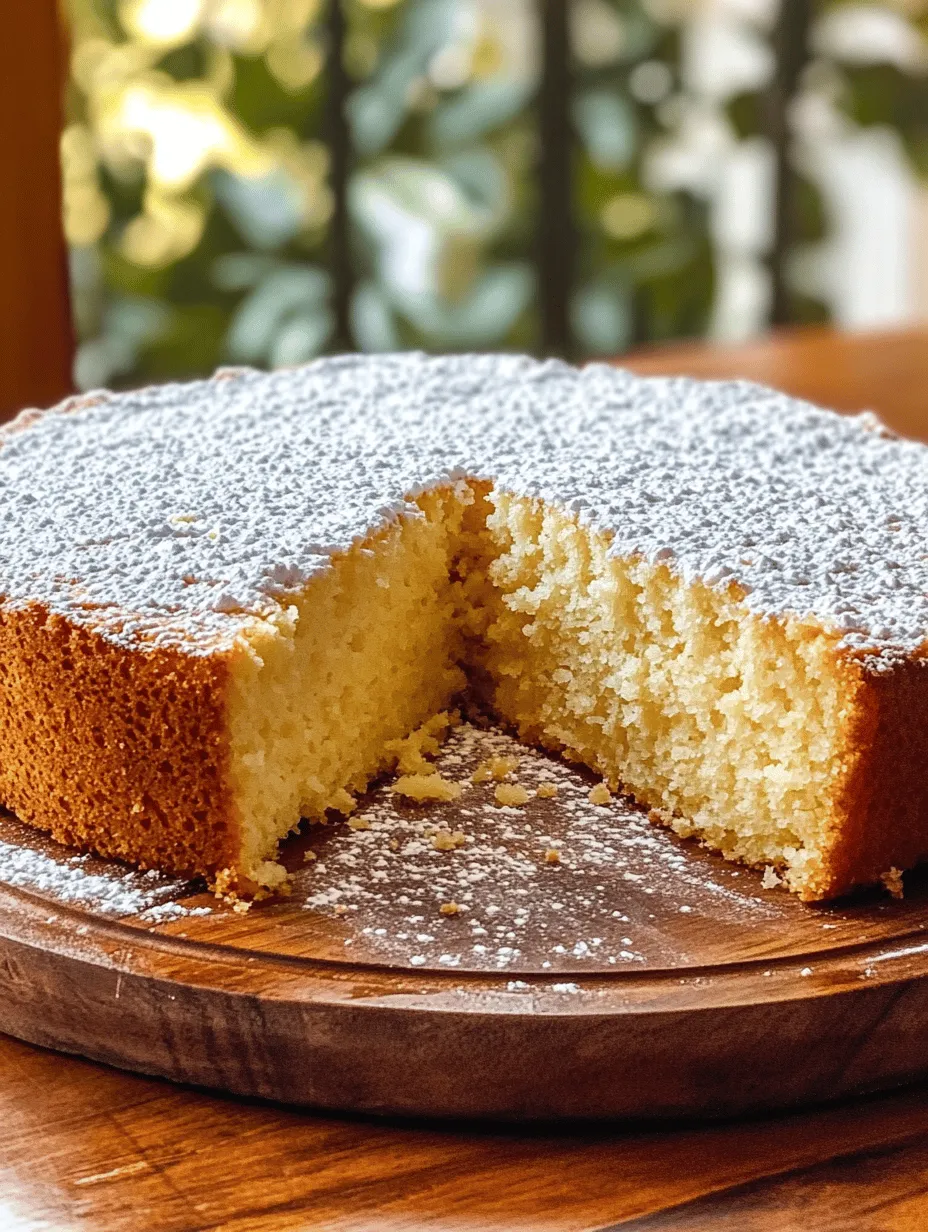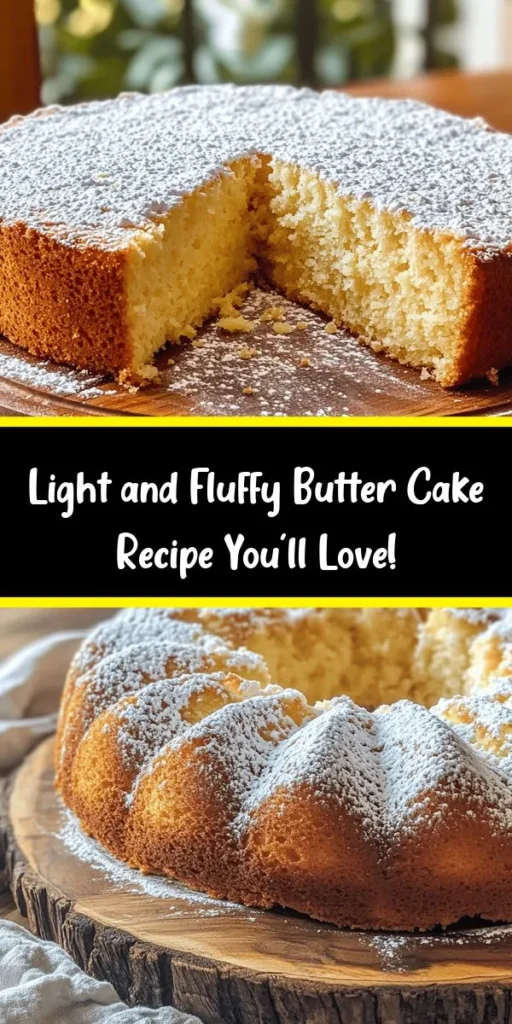Introduction
Butter cake, with its rich flavor and tender crumb, has been a beloved dessert for generations. Its appeal lies not only in its delightful taste but also in its versatility; whether served at a birthday party, enjoyed with afternoon tea, or simply indulged in on a quiet evening at home, this cake is a quintessential treat. Known for its soft, buttery texture and subtly sweet flavor, a well-made butter cake can evoke feelings of nostalgia and comfort.
At the heart of any successful butter cake lies the quality of its ingredients. Using the freshest and highest quality components is paramount for achieving that melt-in-your-mouth experience. From the creamy unsalted butter to the finest granulated sugar, each element contributes to the overall flavor and texture of the cake. In this article, we will delve into the essence of the Heavenly Soft Butter Cake, exploring its history, characteristics, and the essential ingredients that come together to create this delightful dessert.
The Essence of Heavenly Soft Butter Cake
A classic butter cake is characterized by its dense yet tender crumb, which is achieved through a simple yet effective mixing method. Unlike other cake types, such as sponge cakes that rely on whipped egg whites for leavening, butter cakes incorporate creamed butter and sugar to provide both richness and structure. This creates a moist cake that holds up well to various frostings and toppings, making it a versatile choice for any occasion.
Historically, butter cake has deep roots in baking traditions around the world. Its origins can be traced back to Europe, where cakes were often made with butter, sugar, and eggs—a combination that signified wealth and abundance. As baking techniques evolved, so too did the butter cake, adapting to local tastes and ingredient availability. Today, variations of butter cake can be found globally, from the traditional pound cake to the lighter, airy versions enjoyed in many cultures.
The popularity of butter cakes can be attributed to their adaptability. They can be enjoyed plain or enhanced with flavors such as chocolate, fruits, or nuts. Additionally, butter cakes serve as a wonderful base for layer cakes, making them a staple in bakeries and home kitchens alike. Their forgiving nature in terms of baking time and ingredient substitutions makes them accessible to bakers of all skill levels.
Ingredients Breakdown
To create the Heavenly Soft Butter Cake, understanding the role of each ingredient is crucial. Here’s a detailed breakdown of the key components:
1. Unsalted Butter: The star of the show, unsalted butter, is essential for flavor and texture. Using unsalted butter allows for better control over the overall saltiness of the cake. The butter should be at room temperature, which helps in creaming it with sugar to create a light and fluffy base.
2. Granulated Sugar: This ingredient not only adds sweetness but also contributes to the cake’s moisture and structure. When sugar is creamed with butter, it incorporates air, which helps in leavening the cake and creating a light texture.
3. Eggs: Eggs play a vital role in providing structure, moisture, and richness to the butter cake. They help bind the ingredients together and create a stable crumb. Beaten eggs also add air to the batter, contributing to the cake’s rise.
4. Vanilla Extract: A splash of pure vanilla extract enhances the flavor profile, adding warmth and depth to the cake. It complements the buttery richness and elevates the overall taste.
5. All-Purpose Flour: This ingredient is the backbone of the cake, providing the necessary structure. It’s important to measure flour correctly—too much can lead to a dense cake, while too little can cause it to collapse.
6. Baking Powder: As the leavening agent, baking powder is crucial for achieving the desired rise and lightness. It reacts with the moisture in the batter, creating carbon dioxide bubbles that help the cake expand as it bakes.
7. Salt: A pinch of salt is essential for balancing the sweetness of the cake. It enhances the flavors and rounds out the overall taste, preventing the cake from being overly sweet.
8. Whole Milk: Whole milk adds moisture and richness, which helps to keep the cake tender. The fat in whole milk contributes to the cake’s flavor and mouthfeel.
9. Lemon Zest (Optional): While not a mandatory ingredient, a hint of lemon zest can brighten the flavor profile of the cake. This subtle citrus note adds complexity and can elevate the overall taste.
Preparation Steps for Perfect Butter Cake
Creating the perfect Heavenly Soft Butter Cake begins with careful preparation. Each step is essential to ensure that the final product is soft, fluffy, and delicious.
Prepping the Oven and Pans
Before diving into the mixing process, it’s important to prepare your oven and baking pans. Preheat your oven to the required temperature—typically around 350°F (175°C). This ensures that the cake bakes evenly from the moment it goes in.
When it comes to the pans, greasing and flouring them properly is crucial for preventing the cake from sticking. Use unsalted butter or a non-stick cooking spray to grease the pans, ensuring that every corner is covered. After greasing, dust the pans with a light layer of flour, tapping out any excess. This simple step will make the cake release easily once baked.
Creaming Butter and Sugar
The creaming process is one of the most critical steps in making a butter cake. Begin by placing your room-temperature unsalted butter and granulated sugar in a mixing bowl. Using an electric mixer, beat the butter and sugar together on medium speed until the mixture becomes pale and fluffy. This process incorporates air into the batter, which is essential for achieving that light and airy texture.
Aim for a creaming time of around 3 to 5 minutes. The mixture should be light in color and have a smooth consistency. If you notice any lumps in the butter, continue mixing until they disappear. This step is crucial; under-creaming can lead to a dense cake, while over-creaming can cause the batter to become too airy and not hold its structure.
Incorporating Eggs and Vanilla
Once the butter and sugar are creamed to perfection, it’s time to add the eggs and vanilla extract. Crack the eggs into a separate bowl and beat them lightly before gradually adding them to the creamed mixture. Mix well after each addition, ensuring that the eggs are fully incorporated before adding the next. This helps maintain the emulsion and prevents the batter from separating.
After all the eggs are mixed in, add the vanilla extract. Mix it on low speed until just combined. The batter should be smooth and glossy, indicating that the wet ingredients are well integrated before proceeding to the dry ingredients.
Next Steps
With the initial steps outlined, you are now on your way to creating a Heavenly Soft Butter Cake that will delight your taste buds and impress your friends and family. Stay tuned as we continue to explore the remaining steps, tips for perfecting your cake, and answers to common questions about this beloved dessert.

The Impact of Room Temperature Ingredients on the Batter
Using room temperature ingredients is a critical step in achieving the perfect texture for your Heavenly Soft Butter Cake. When butter, eggs, and other components are at room temperature, they emulsify more effectively, creating a smooth and homogenous batter. This process promotes better aeration, which is vital for a light and fluffy cake. Cold ingredients, on the other hand, can lead to a dense texture and uneven mixing, making it essential to plan ahead and allow your ingredients to warm up before you start baking.
Combining Dry Ingredients
Combining your dry ingredients is the next step in preparing the batter. This usually includes flour, baking powder, and salt. It’s essential to measure these ingredients accurately to ensure the right balance in your cake. Using a kitchen scale can help achieve precision. Once measured, whisk the dry ingredients together to ensure they are evenly distributed. This step is crucial because it helps in the even rising of the cake during baking.
Why Sifting Flour is Beneficial
Sifting flour serves multiple purposes in cake baking. Firstly, it aerates the flour, making it lighter and easier to incorporate into the batter. This is particularly important for a soft cake, as it helps to prevent the formation of dense clumps. Secondly, sifting helps to remove any potential lumps or impurities in the flour. While some modern flours are milled to be lump-free, sifting is still a good practice to ensure a silky smooth batter.
Tips for Preventing Clumps and Ensuring Even Mixing
To prevent clumps from forming, consider the following tips when combining your dry ingredients:
1. Use a Fine-Mesh Sieve: A fine-mesh sieve is perfect for sifting, as it allows for even distribution of the flour and ensures uniformity.
2. Whisk Before Measuring: Whisk the flour before measuring to aerate it and prevent it from packing tightly in your measuring cup.
3. Gradual Addition: When adding dry ingredients to the wet ingredients, do so gradually. This approach helps to minimize clumping and allows for better mixing.
Mixing Techniques: Wet and Dry Ingredients
When combining wet and dry ingredients, the technique you use matters. Start by creaming the butter and sugar until light and fluffy. This process introduces air into the mixture, which contributes to the cake’s lightness. Once creamed, add the eggs one at a time, ensuring each is fully incorporated before adding the next.
When it comes to mixing the dry ingredients into the wet mixture, alternate between adding the dry ingredients and a liquid component (such as milk). This method helps to maintain a balance of moisture and ensures that the batter is well mixed without overworking it.
The Science Behind Alternating Mixtures
Alternating between wet and dry ingredients not only helps in achieving a smooth batter but also aids in gluten development. By mixing in small increments, you allow the flour to hydrate fully without overworking it, which is vital for a tender cake. This technique leads to a balanced structure, preventing the cake from becoming tough.
Importance of Not Overmixing to Maintain Softness
Overmixing is one of the most common pitfalls in cake baking. When flour is mixed too vigorously or for too long, gluten develops, leading to a firmer texture in the final product. For a soft butter cake, aim to mix just until the ingredients are combined. Stop mixing once there are no visible streaks of flour, and remember that a few small lumps are perfectly acceptable.
Baking the Heavenly Soft Butter Cake
Understanding baking times is essential for achieving the perfect cake. Baking times can vary based on the size and shape of your pan. Generally, a standard 9-inch round cake will take about 25-30 minutes at 350°F (175°C), while smaller pans may require less time, and larger pans may need more.
Visual Cues for Doneness
As your cake bakes, keep an eye out for visual cues that indicate doneness. The edges should start to pull away from the sides of the pan, and the top should be golden brown. Additionally, the surface should spring back when lightly pressed.
Importance of the Toothpick Test
One of the most reliable methods to check for doneness is the toothpick test. Insert a toothpick into the center of the cake; if it comes out clean or with a few moist crumbs, your cake is ready. If the toothpick comes out with wet batter, it needs more time in the oven.
Cooling the Cake
Once your cake is baked to perfection, it’s time to cool it. Proper cooling is critical to maintaining the cake’s texture and flavor. Allow the cake to cool in the pan for about 10-15 minutes before transferring it to a wire rack. This resting period allows the cake to set and makes it easier to remove from the pan without breaking.
Best Practices for Cooling to Maintain Texture
To cool your cake effectively, follow these best practices:
1. Use a Wire Rack: Transfer the cake to a wire rack to cool completely. This allows air to circulate around the cake, preventing it from becoming soggy.
2. Let It Cool Completely: Allow the cake to cool completely before frosting or slicing. This will ensure that the texture remains light and airy.
The Science of Cooling and Its Effect on Flavor
Cooling a cake isn’t just about texture; it also influences flavor development. As the cake cools, the flavors meld together, enhancing the overall taste. The cooling process allows the moisture within the cake to redistribute, resulting in a more balanced flavor profile.
Serving Suggestions and Pairings
When it comes to serving your Heavenly Soft Butter Cake, the possibilities are endless. Traditionally, this cake is served plain, allowing its rich buttery flavor to shine. However, there are many creative ways to elevate your serving experience.
Dusting with Powdered Sugar vs. Frosting Options
A light dusting of powdered sugar can add a touch of elegance without overpowering the cake’s flavor. Alternatively, consider frosting options like a simple buttercream or cream cheese frosting for a more indulgent treat. For a fruity touch, try a lemon glaze or a berry compote to complement the cake’s buttery richness.
Pairing with Beverages: Tea, Coffee, or Milk
Your Heavenly Soft Butter Cake pairs beautifully with a variety of beverages. A cup of tea or coffee enhances the cake’s flavors, making it a perfect afternoon treat. For a comforting dessert experience, consider serving it with a glass of cold milk, which balances the sweetness and richness of the cake.
Creative Serving Ideas
Transform your butter cake into a dessert centerpiece by layering it with fresh fruits and whipped cream. Create a trifle by alternating layers of cake, cream, and fruit in a glass dish for a visually stunning presentation. You can also bake the cake in muffin tins for individual servings, making it ideal for gatherings or events.
Suggestions for Flavor Variations and Add-ins
Experimenting with flavor variations can make each baking experience unique. Consider adding nuts, chocolate chips, or fruit zest to the batter for added texture and flavor. For a twist, try infusing the batter with extracts like almond or coconut for a delightful surprise.
Storage and Shelf Life
To keep your Heavenly Soft Butter Cake fresh and delicious, proper storage is essential. If you have leftover cake, store it in an airtight container at room temperature for up to three days. If you live in a humid climate, refrigeration might be necessary to extend its shelf life.
How to Keep the Cake Fresh for Longer
For longer storage, consider wrapping the cake tightly in plastic wrap and then in aluminum foil. This method helps to prevent drying out and maintains its softness.
Freezing Options and Methods for Thawing
If you want to preserve your cake for an extended period, freezing is an excellent option. Slice the cake before freezing, as this allows you to thaw only what you need. Wrap each slice individually in plastic wrap and place them in a freezer-safe bag or container. When you’re ready to enjoy a slice, remove it from the freezer and let it thaw at room temperature or gently warm it in the microwave for a few seconds.
Conclusion
The Heavenly Soft Butter Cake is a true testament to the beauty of simple ingredients coming together to create something extraordinary. Its rich buttery flavor, delicate texture, and versatility make it a staple in any dessert repertoire. Whether you choose to serve it plain, dressed up with frosting, or alongside your favorite beverage, this cake is sure to delight everyone who tastes it.
As you embark on your baking journey, feel free to experiment with flavors and variations to make this cake your own. The joy of baking is not just in the delicious end product but also in the love and creativity you pour into it. Happy baking!



